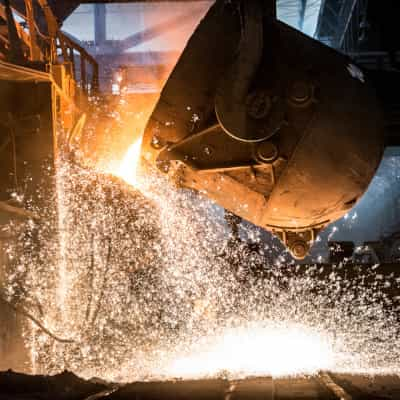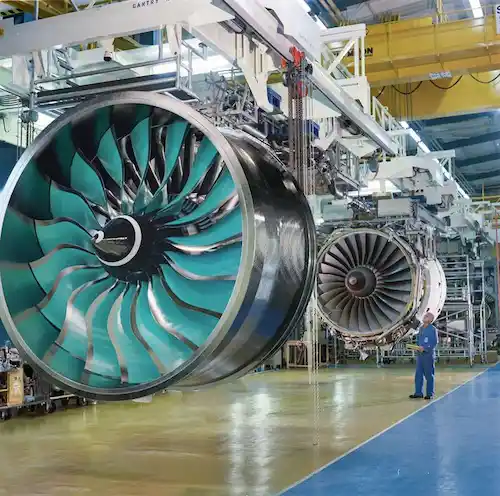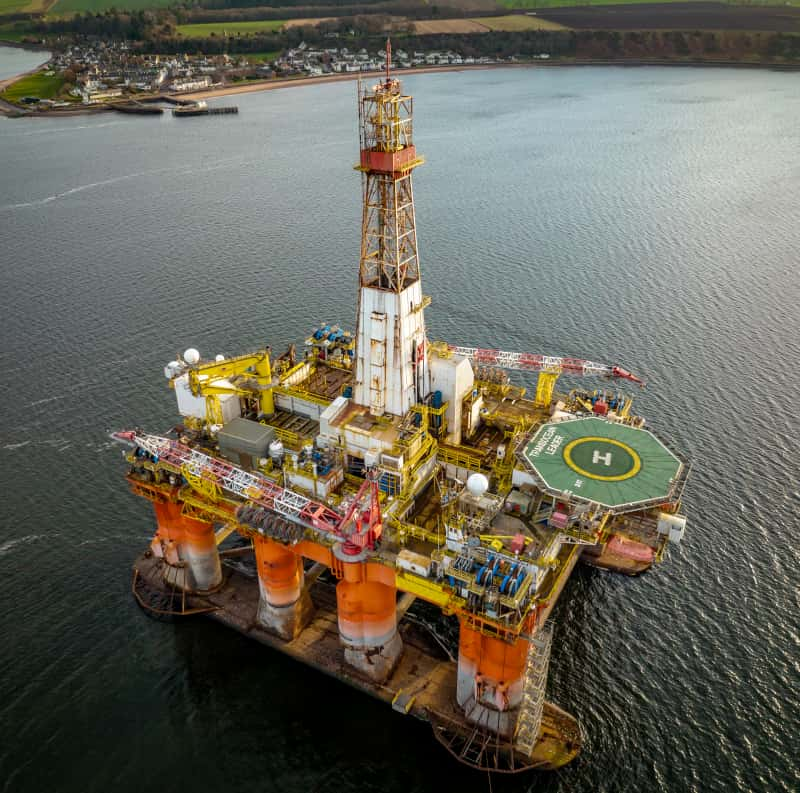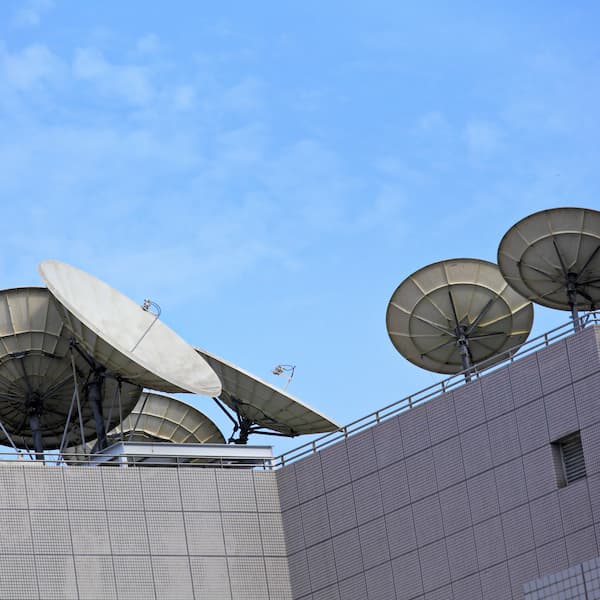ALLOY: metal made of the fusion of two or more metals.
ALUMEL®: magnetic alloy used for thermocouple and thermocouple extension wire. Alumel is a registered trademark of Hoskins Mfg. Co.
ANNEALING: thermal treatment process which consist of heating a metallurgical product at a sufficient temperature to recover some or all of its structural and physical-chemical balance and then gradually cooling it.
ANSI: (American National Standards Institute) a federation of trade, technical and professional organizations, government agencies and consumer groups, coordinates standards development and publishes standards.
ARMOUR: overall metallic braid or helically applied metallic tapes primarily for the purpose of mechanical protection.
ASA: (American Standards Association) a federation of trade, technical and professional organizations
government agencies and consumer groups, coordinates standards development and publishes standards.
ASTM: (American Society for Testing Materials) an organization which tests materials and establishes standards for the testing of various materials for industry.
ATTENUATION: the loss of power or signal in a circuit expressed in decibels (dB).
AWG: (American Wire Gauge) system commonly used for describing the size of copper wire. It is based on the circular mil system. 1 mil equals 0,0254 mm or 25,4 microns.
B
Page up
BASEC: British Approvals Service for Cables is an independent, accredited certification body.
BSI: British Standard Institute.
BLUETOOTH® : It is a technology of Wireless Personal Area Network (WPAN). It makes it possible to exchange data without cables between laptops, printers, PDA or mobile phones.
BRAIDED SHIELD: metal part made of woven bare, coated or aluminium strands used as electrical screening of wires and cables.
BUNCH STRAND: a conductor in which all individual strand are twisted in the same direction without regard for geometrical arrangement.
BUS BAR: a conductor, copped bar used to make a common connection between several circuits.
BUS BAR: rectangular copper or aluminium conductor used to supply a common electrical power to different devices or to make a common connection between several circuits.
C Page up
CSA: Canadian Standard Association is an independent, accredited certification body.
CABLE: usually two or more insulated wires covered with an outer sheath (or jacket) overall.
CAPACITANCE: property of a system of conductors and dielectrics which permits the storage of electricity where potential difference exists between two conductors. It is expressed in farads and their submultiples.
CARRIER: set of fine metal or textile parallel strands woven together resulting in a braid.
CELSIUS TEMPERATURE SCALE: (or centigrade temperature scale). Temperature scale based upon water freezing point defined as zero degree and the boiling point defined as 100 degrees.
CHROMAX®: Chromax® is a DRIVER HARRIS registered trademark for a resistance wire. It is a 35% nickel, 20% chromium and 45% iron alloy
CHROMEL®: non-magnetic alloy used for thermocouple and thermocouple extension wires. Chromel is a registered trademark of Hoskins Mfg. Co.
CHROMEL®-ALUMEL®: (nickel chromium – nickel aluminium) thermocouple that permits temperature measurements. This combination is the most commonly used for it can measure temperatures from 0°C to + 1200°C.
CIRCULAR MIL(CMIL): term used to define conductors’ cross-sectional area (particularly in USA). It is equal to the area of a circle 1/1000 of an inch in diameter
CLOTHING: continuous tube insulating the conductor.
COAXIAL CABLE: coaxial cable is a two conductor cable in which one conductor completely surrounds the other. Both conductors have a common axis and are separated by a continuous uniform insulation or dielectric thickness.
CONDUCTANCE: reciprocal of resistance (1/R).
CONDUCTIBILITY: property of an element to transmit electricity.
CONDUCTIVITY: reciprocal of volume resistivity (S/m) (1/p).
CONDUCTOR: it is the inner part of an insulated wire transmitting electrical current. A conductor usually consists of copper, aluminium, steel, nickel, silver or other materials.
CONSTANTAN®: 55% copper and 45% nickel alloy used in thermocouple and extension wires.
COPPER: basic metal for electrical conductors used either bare or silver, tin or nickel plated.
COPPERCLAD®: nickel iron alloy (generally 42% nickel) covered with a layer of copper of variable thickness according to the conductibility needed.
COPPER-CONSTANTAN: thermoelectric couple that permits temperature measurements from about -180°C to +300°C.
COPPER-CUPRONICKEL®: thermoelectric couple compensating the couple platinum rhodium-platinum.
COPPERWELD®: Copperweld is a Copperweld Steel Company registered trademark for a hard or soft annealed steel wire coated with a layer of copper of variable thickness according to conductibility needed.
CORE: made of two components (conductor and insulation). It could be an insulated wire or the inner part (under the outer conductor) of a coaxial cable.
CORONA: (effect) luminous discharge due to gas ionization surrounding a conductor submitted to a voltage gradient exceeding a critical value.
COVERAGE: ratio expressed in percent of the cable area actually covered with a braid on the total cable area (under the braid).
CUT-THROUGH: resistance of an insulation to penetration with a sharp object under conditions of pressure, temperature, etc.
D Page up
DIELECTRIC: name given to any insulating material that is not a conductor of electricity.
DIELECTRIC CONSTANT: specific inductive capacity -property of a dielectric to store electrostatic energy.
DIELECTRIC LOSS: lost energy when the dielectric is placed in a variable electric field.
DISSIPATION FACTOR: the loss angle tangent of the insulation material.
DRAIN WIRE: an uninsulated solid or stranded conductor which is placed within a cable in contact with an electrical shielding braid or tape.
E Page up
EFGLAS: A composite insulation of glass fibre and PTFE (Polytetrafluoroethylene).
ETFE: (Ethylene tetrafluoroethylene) thermoplastic resin used to insulate wires and cables with an operating temperature rating from -90°C to +155°C.
ETHERNET®: Ethernet is a standard for data transmission for local networks. It is also called IEEE802.3 standard.
EXTENSION CABLE: a pair of wires used to connect a thermocouple cable to a temperature meter.
EXTRUSION: a processing method whereby heated or unheated materials are forced through a shaping outlet or die under pressure to become a continuous formed shape.
F Page up
FAHRENHEIT TEMPERATURE SCALE: a temperature scale based upon the water freezing point defined as 32°F (0°C) and the boiling point defined as °F (100°C). Formulae – °F=°C*9/5+32
FEET: English unit of measure =12 inches=304,8 mm=0,3048 m.
FEP: (Fluorinated ethylene propylene) thermoplastic resin used to insulate wires and cables with an operating temperature rating -90°C to +200°C.
G Page up
GIGABIT ETHERNET: this term describes various technologies for transmitting Ethernet frames at a rate of one gigabit per second (IEEE 802.3-2005 standard).
GREY: radiation dose (1Gy = 100 Rad).
H Page up
HIGH VOLTAGE: wire or cable with a voltage exceeding 600 V AC.
HOOK-UP WIRES: insulated wires with a section generally less than 3 mm² used in electronic wiring.
I Page up
IEC: International Electrotechnical Committee is the international standards and conformity assessment body for all electrical, electronic and related technologies.
IMPEDANCE: the total opposition (i.e. resistance and reactance) a circuit offers to the flow of alternating current. Volts per ampere; ohms
INCH: English unit of measure (1 inch=25,4 mm)
INSULATION RESISTANCE: the resistance of an insulation material to the flow of current resulting from an impressed D.C. voltage.
INTEMP 250 CABLE: registered brand name of Heatsense Cables Limited – high performance cable designed to operate under more arduous high temperature conditions
IPCEA: Insulated Power Cable Engineers Association of power cable engineers from many different American companies. The object is to establish standards in the insulated power cable industry.
IRON: International Organization for Standardization.
J Page up
JACKET: (or sheath) overall cable cover normally providing mechanical and environmental protection.
K Page up
L
Page up
LAY-LENGTH: A term used to measure the lay length between twisted pairs of cable.
LSZH: Cable jacketing material that emits low smoke and no halogen – also designated as LSOH, LSFH & OHLS
LOW NOISE: semi-conductive coating applied on the dielectric of a core or wire to reduce to a minimum any signals generated by the motion of the cable components in respect to each other.
LOW VOLTAGE: voltage inferior or equal to 600 V AC.
M Page up
MAGNET WIRE: insulated copper wire used for winding coils, motors and transformers.
MANGANIN®: resistance wire registered trademark. It is an alloy made of 86% copper, 12% manganese and 2% nickel.
MFA: (perfluoromethoxy) thermoplastic fluorinated resin used for the insulation of single wires and the jacketing of cables. Working temperature : -90°C to +250°C.
MICA: inorganic tape included in the composition of cables offering resistance to very high temperatures, flame and fire.
MICROINCH: one-millionth of an inch.
MICRON: one-thousandth of a millimetre / = 0,001 mm.
MIL: one-thousandth of an inch = 0,0254 mm = 25,4 microns.
MIL SPECIFICATION: American Military Specification for various materials.
MYLAR ALUMINIUM TAPE: polyester film and aluminium foil lamination used as shield.
MYLAR®: registered trademark for a polyester film used as separating tape in multiconductor cables.
N Page up
NEMA: (National Electrical Manufacturers Association) American organization well known for electrical motors and gear reducers standardization and for electrical wire and cable specifications.
NETWORK : A network is a group of interconnected computers. It allows the user to connect multimedia devices such as television, computer, Internet, phone, video supervision camera to every RJ45 terminal outlet.
NICHROME®: Driver Harris registered trademark for a resistance wire mainly made of nickel and chromium in various ratios according to the type.
NICKEL PLATING (NP): electrolytic process by which a thin uniform layer of nickel is put on copper or other materials.
NOMEX®: DUPONT registered trademark for an aramid fibre with an excellent mechanical resistance, good resistance to high temperature radiation and chemicals.
NPC: (Nickel Plated Copper) symbol designating a nickel plated electrolytic copper conductor.
O Page up
OZONE: allotropic variety of oxygen produced by discharge of electricity into air.
P
Page up
Peek: a semi crystalline thermoplastic offering excellent mechanical properties & chemical resistance, operating temperature: -75°C to +200°C, halogen free, excellent radiation resistance.
PFA: (Perfluoroalkoxy) thermoplastic fluorinated resin used for the insulation of single wires and the jacketing of cables, operating temperature: -90°C to +260°C.
POLYIMIDE: compact, lightweight mechanically tough polymer with good flexibility, heat, chemical and radiation resistance.
POLYETHYLENE: name given to a whole family of insulating materials derived from the polymerisation of ethylene gas, with good electrical characteristics.
POWER CABLE: wire or cable carrying adequate current capacity to supply power.
PTFE IMPREGNATION: impregnation of a glass fibre braid with polytetrafluorethylene (PTFE) lacquer.
Q Page up
QPL: Qualified Product List issued by the US Government Agency.
QUALITY CONTROL: Control department responsible for maintaining a high and constant quality level for all products.
R Page up
RMS: (Root Mean Square) a means of expressing AC voltage or AC current in terms of D.C (approximatively 80% of alternative current peak voltage).
RAD: total amount of ionizing radiation absorbed by material or tissue expressed in centigray (cGy).
REM: cooling irradiation dose. Unit used in biological tests on the human being where REM equals. 1 RAD * factor of radiation * factor of radiation distribution.
RESILIENCE: number typical of impact strength of a material.
RESISTIVITY: the longitudinal electrical resistance of a uniform rod of unit length and unit cross sectional area.
RG: (Radio Frequency Government) symbol designating coaxial cables, following MIL-C-17 American standard.
ROPELAY: a conductor made of multiple groups of strands (i.e. a 133 strands conductor is made of 19 strands laid into a group and then seven such groups laid together).
S Page up
SERVED WIRE SHIELD: screen made of a group of metallic strands helically applied around one or more insulated.
SHIELDING: the process of applying a metallic braid composed of tinned or bare copper over the insulated conductors. The shielding effectiveness is in proportion to the amount of coverage, usually expressed in percentage.
SILICONE IMPREGNATION: impregnation of a textile braid with silicone varnish.
SILVER PLATING: electrolytic process by which a thin uniform layer of silver is put on copper or other metals.
SINTERING: usual term for fusing polytetrafluoroethylene paste or tapes at high temperatures.
SPARK TEST VOLTAGE: dielectric test applied to wire or cable during its manufacturing to determine if there are electrical defects in the insulation or sheath.
SPC: (Silver Plated Copper) symbol designating a silver plated electrolytic copper conductor.
SPCA: (Silver Plated Copper Alloy) symbol designating a silver plated copper alloy conductor.
SPTF: non-magnetic silver plated copped alloy.
STRAND: individual wire of any stranded conductor.
STRANDED CONDUCTOR: (twist) a conductor made with a specified number of strands.
T Page up
TAPING: a method or process to insulate electrical wires and cables. Insulation of helically wound tapes applied over a conductor. This operation can possibility be followed by sintering depending on the type of tape used.
TEFLON®: DUPONT registered trademark for a family of powders or resins such as PTFE, FEP, PFA.
TEFZEL®: DUPONT registered trademark for a thermoplastic resin named ethylene tetrafluoroethylene (ETFE).
TF: (Tensile flex) International Wire (USA) registered trademark for a copper, chromium and cadmium high mechanical resistance alloy. (ALLOY 135).
THERMOCOUPLE: union of dissimilar metals submitted to various temperatures in order to create an electro-magnetic force (E.M.F). The voltage is usually in micro or millivolts.
THERMOPLASTICS: range of resins being easily softened under heat.
TIN PLATING: process by which a thin uniform layer of tin is applied to copper or other materials.
TINSEL CONDUCTOR: stranded conductor in which each strand is very thin copper ribbon spirally wrapped around a textile yarn.
TPC: (Tin Plated Copper) symbol designating a tin plated copper conductor.
TRIAXIAL CABLE: cable made of three concentric conductors.
TRUE CONCENTRIC: Individual wires are subject to an exact positioning around a core wire which ensures an all-out uniform structure – each of these succeeding layers is applied with an opposite direction of twist.
U Page up
UHF: (Ultra-High-Frequency) frequency from 300 up to 3000 MHz.
UL: (Underwriters Laboratories Inc.) American Organization founded in 1894, sponsored by the National Board of Fire Underwriters who test, verifies, inspects and audits supply chains.
UL RECOGNIZED: a product that has been tested and approved to Underwriters Laboratories Standards
UNI-DIRECTIONAL CONCENTRIC: conductor constructed with a central core surrounded by more than one layer of helically laid wires. All layers having a common lay direction with an increase in length of lay for each successive layer.
UNILAY CONDUCTOR: an inner strand surrounded by one or more concentric layers of helically wound, strands in a fixed geometrical arrangement with the direction and length of lay the same for each layer.
V Page up
VDE: (Verband Deutscher Elektrotechniker) German Standardization Organization.
VHF: (Very High Frequency) Frequency from 30 up to 300 MHz.
VELOCITY OF PROPAGATION: velocity of propagation, commonly called velocity, is the ratio of the speed of the flow of an electric current in an insulated cable to the speed of light. All insulated cables have this ratio and it is expressed as a percentage.
W Page up
WI-FI: WI-FI is a technology for wireless local network (WLAN). It is based on the international IEEE 802.11 (ISO/IEC 8802-11) – More generally, 3 technologies can be used for data wireless transmission : Bluetooth®, Wi-Fi and DECT.
Z Page up
Zero Halogen: Cable jacketing compound that emits no halogen when exposed to high sources of heat







